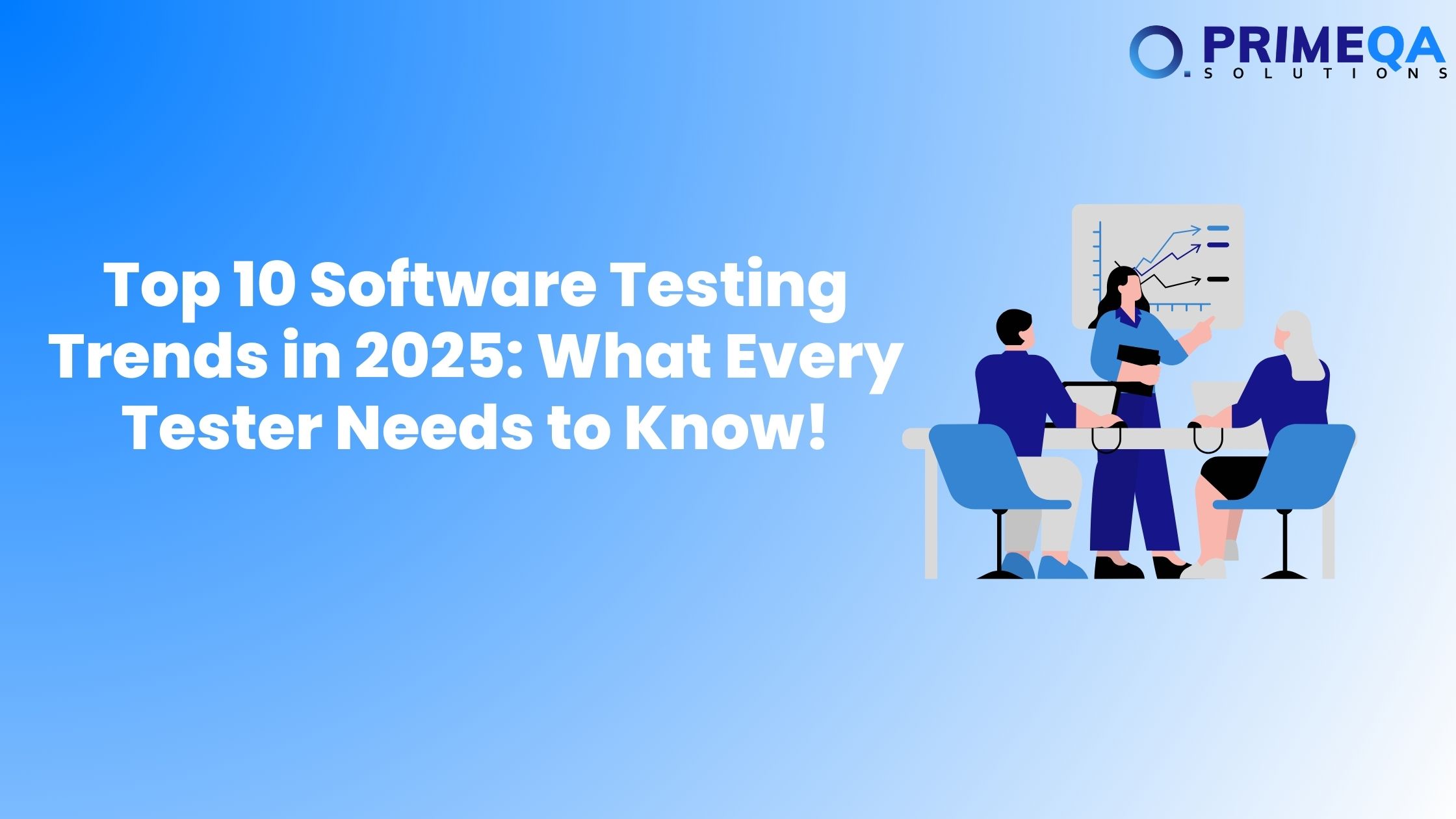The software testing landscape is rapidly evolving, driven by advancements in automation, and DevOps methodologies. As we enter 2025, leveraging AI-powered tools is becoming essential for testers to enhance efficiency and accuracy. Staying updated with the latest testing trends is crucial for QA professionals and businesses striving for quality assurance excellence. This blog explores the top 10 software testing trends in 2025, including AI-driven automation, DevTestOps, and cloud-native testing, helping testers stay ahead of the curve.
AI-Powered Testing
Artificial Intelligence (AI) is revolutionizing software testing by automating test creation, execution, and maintenance.
AI-Driven Test Automation
- AI-driven tools enhance efficiency by reducing manual efforts and increasing test coverage.
- Self-healing test automation: AI adapts to changes in UI elements, reducing test script maintenance.
- Predictive analytics: AI analyzes historical test data to predict potential defects.
- Natural language processing (NLP) in test case generation: NLP enables the generation of test cases based on requirements written in plain English.
Shift-Left and Shift-Right Testing
Early defect detection and continuous testing are becoming the norm.
Shift-Left Testing
- Integration with CI/CD pipelines: Testing starts earlier in the development lifecycle.
- Automated unit and API testing: Focuses on identifying defects at the code level.
- Shift-Right Testing
- Chaos engineering: Introduces failures in production environments to improve system resilience.
- Observability-driven testing: Uses logs, metrics, and traces to monitor real-time application behavior.
Ensure Your Software Quality with PrimeQA Solutions: Explore Our Services
Low-Code and No-Code Testing
- With the rise of citizen developers, low-code and no-code platforms are making test automation accessible to non-programmers.
- Codeless automation tools: Tools like Testim and Katalon reduce the need for scripting.
- Drag-and-drop test case creation: Enables faster test development.
- Business user involvement: Non-technical stakeholders can participate in quality assurance.
Hyperautomation in Testing
- Hyperautomation combines AI, machine learning, and RPA (Robotic Process Automation) to accelerate test automation.
- AI-enhanced test execution: AI optimizes test case selection and execution.
- Smart test orchestration: Dynamically prioritizes test cases based on risk assessment.
- Automated defect tracking: AI identifies patterns in defect reports for proactive issue resolution.
Increased Adoption of DevTestOps
- The integration of development, testing, and operations fosters a culture of continuous quality.
- Test automation in CI/CD pipelines: Ensures quick feedback on code changes.
- Infrastructure as Code (IaC) testing: Validates configurations and deployments.
- Collaboration between developers and testers: Encourages a shift-left approach.
API and Microservices Testing
- As microservices architecture gains traction, API testing becomes more critical than ever.
- Contract testing: Ensures seamless communication between services.
- Service virtualization: Simulates APIs to enable parallel development and testing.
- GraphQL testing: Addresses the complexities of GraphQL-based applications.
Performance Engineering Over Performance Testing
- Performance engineering is replacing traditional performance testing by integrating performance considerations into the development lifecycle.
- Shift-left performance testing: Identifies bottlenecks early.
- Real-time performance monitoring: Uses APM tools to analyze performance trends.
- Scalability testing in cloud environments: Ensures applications can handle varying loads.
Blockchain and IoT Testing
- With the rise of blockchain applications and IoT devices, specialized testing methodologies are emerging.
- Smart contract testing: Validates blockchain-based transactions.
- Security testing for IoT devices: Identifies vulnerabilities in connected devices.
- Edge computing testing: Ensures reliability in distributed IoT networks.
Increased Focus on Security Testing
- Cybersecurity threats are rising, making security testing a top priority.
- DevSecOps integration: Embeds security testing into the development pipeline.
- AI-driven security testing: Detects vulnerabilities using machine learning.
- Zero-trust security model validation: Ensures strict authentication and authorization.
Cloud-Native and Serverless Testing
- Cloud computing and serverless architectures demand new testing approaches.
- Testing serverless applications: Ensures function-level reliability.
- Containerized application testing: Validates Kubernetes and Docker deployments.
- Multi-cloud compatibility testing: Ensures seamless operation across cloud providers.
Software testing in 2025 is evolving to meet the demands of faster releases, higher quality, and robust security. Embracing these trends will help QA professionals and businesses enhance their testing strategies, ensuring superior software quality.
Future-Proof Your QA Strategy with PrimeQA Solutions
Don’t let outdated testing practices hold you back. Upgrade your software testing approach with PrimeQA Solutions’ expert guidance and innovative solutions. Get in Touch







